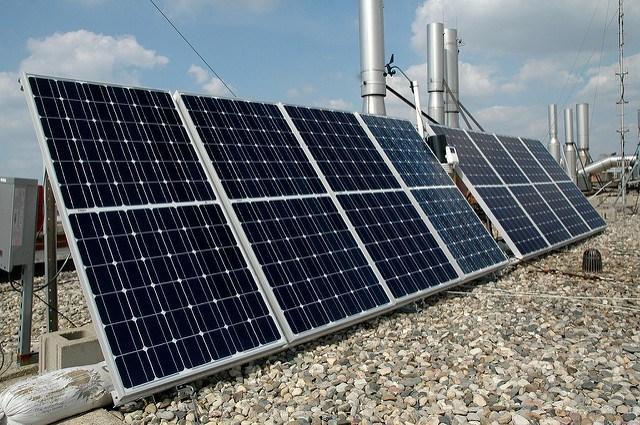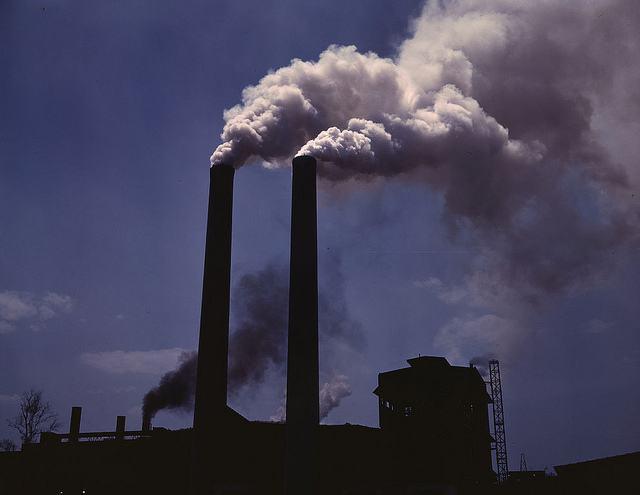Will Millennials and Boomers Fight or Unite Over Sustainability?


The rise of millennials and the aging of the boomer generation is reshaping America. In 2017, 50 percent of the U.S. population will be 50 years old or older. That same year, the millennial generation will become both America’s most employed demographic group and the demographic group with the largest buying power. The best way to visualize these demographic mega-trends is to envision two tectonic plates moving past each other.
Two generations moving too often in opposite directions
Much of the boomer generation’s economic history is defined by its consumption. It is the first generation to be born into mass-marketing that touted “having it your way.” No other generation has experienced, or will ever experience, the same high volume of TV and radio advertising.
The boomer generation’s consumption drove three mega-trends. The first was the rapid growth in fossil fuel consumption used to run their cars, homes and businesses. The second was their purchases of personal computers and programs that has resulted in today’s Information Age. The third was the adoption of a mass-produced food supply artificially infused with sugar, salt, fat and chemicals.
The millennial generation is just now putting their stamp on our economy and environment. Most obviously this is a generation defined by their smart phones and reliance on sites like Google, Facebook and YouTube for real-time learning, entertainment, purchases and awareness. Less obvious to other generations, but not to millennials, they are the most diverse generation in history.
From food to fun, they try new things, test new ideas and socially engage. Their relative fiscal conservativeness is driven from coming of age during a Great Recession created by the financial risks taken by Wall Street boomers. The urban members of the millennial generation are redeveloping the downtowns abandoned by the boomer generation. They are inventing best practices in small (or smaller) living and a shared economy enabled though smartphone apps. Millennials are the empowering force behind the success of companies like Uber and Amazon.
Boomer generation is hitting a sustainability wall
For all of the boomer generation’s accomplishments and examples of service, this generation may be remembered by history as the generation that borrowed so much money that it threatened America’s financial integrity. History will definitely remember this generation for consuming so much fossil fuels that it created climate change. It is also the fattest generation, with over 70 percent of boomers being overweight or obese. This is a generation where the majority of its members cannot afford their future health costs or retirement. The boomer generation is hitting a sustainability wall.
Millennial generation seeking sustainable solutions
The millennial generation is seeking sustainable solutions to the mistakes they think their boomer generation parents or grandparents have made. For example, they are the driving force behind a growing national shift away from mass-produced foods that are not sustainably sourced. Their buying power, along with concerned parents, are driving the sales of healthier foods to double-digit annual growth rates.
The millennial generation believes climate change is real, manmade and is damaging to human health. They are aligning with businesses that are taking actions to reduce climate changing emissions.
Will they unite or fight over sustainability?
The boomer generation shaped the 20th century. The millennial generation will shape the 21st century. At this transitional point in time, the question is whether these two generations can come together over sustainability.
Pain is what will eventually drive the boomer generation toward sustainability. At some point in their near future, the boomer generation will suffer the fullest ramifications of their unsustainable diet. This will push their focus from plus-size clothing to survival and the cost of survival. For many boomers, this realization will be too late. For many more, they will realize their worst fears and become dependent on government funding of pills and care. The optimistic vision is that the boomer generation will figure this out before this happens by following the millennial generation in buying healthy and sustainably-sourced food.
A related question is whether the boomer generation will shift from their climate-changing consumption of fossil fuels. Again, pain could be a motivator. How much longer can this generation afford the homes they raised their children in? My experience is that it is the boomer generation homeowners who are the leading purchasers of rooftop solar because it lowers their electricity bills. Many of these boomers are then really getting “weird” by using their energy savings to lease electric cars they fuel for free through their home’s solar system. In addition, a growing number of boomers are beginning the process of downsizing that has the potential of reducing their emissions.
Finally, another pain-point for both the boomer and millennial generation is the lack of income growth for the middle class over the last 15 years. Both generations have been harmed by this. Can these generations come together over this common economic challenge by adopting sustainable consumption?
Those will be the type of generational questions that will determine the future of boomers, millennials, our economy and the environment.
Image credit: Flickr/James Lumb
Jessica Alba’s Honest Co. Claps Back at Claims of Dishonesty


Jessica Alba’s Honest Co. is fighting claims that it might not be so honest after all. The $1.7 billion eco empire recently came under scrutiny for using an ingredient in its laundry detergent that it pledged to avoid.
The company, which is most known for its adorable baby products and environmentally-friendly cleaning supplies, has been giving corporate giants like Procter & Gamble and Clorox Co. a run for their money. This is largely due to the fact that Honest products offer a guarantee that they don't contain the harsh chemicals often found in mainstream brands.
However, according to a recent report commissioned by the Wall Street Journal, the company’s liquid laundry detergent contains a cleaning agent called sodium laurel sulfate, or SLS. The ingredient, which is found in everyday household items from Colgate toothpaste to Tide detergent, is one of the primary ingredients the company tells its customers to avoid.
“Our findings support that there is a significant amount of sodium lauryl sulfate” in Honest’s detergent, said Barbara Pavan, a chemist at one of the labs which conducted the test, Impact Analytical. Another lab, Chemir, a division of EAG Inc., reported its test for SLS found "about the same concentration as Tide, which is made by P&G.”
The Honest Co. is not taking this allegation lightly and has disputed the labs’ findings. “We do not make our products with sodium lauryl sulfate,” said Kevin Ewell, the company’s research and development manager.
The company claims that its detergent contains sodium coco sulfate (SCS) instead, an ingredient it says is a "gentler alternative." The company reported conducting "rigorous testing" and said the Journal's article is wrong and “reckless."
According to a blog post published on the company’s website, it claims the Wall Street Journal article included “many factual inaccuracies and misleading statements,” with “the goal of harming the reputation and good will” that the company has built.
The article states that the research commissioned by the Wall Street Journal did not even include tests for SCS. And, while many brand detergents use SLS to create suds, the company "has always chosen SCS" due to the fact that it is "less irritating to the skin and safer to use," the company said. It disputes all claims that sodium lauryl sulfate (SLS) and sodium coco sulfate (SCS) are the same.
Even though both ingredients are derived from coconut oil, their molecular makeup is quite different. And while SCS can only be made from raw coconut oil, SLS can be refined from many raw materials including palm oil or petroleum. Although the ingredients might appear to be quite similar, the difference in their molecular form is vast.
"At the Honest Co., our mission is to develop safe and effective products for our families to use and for families everywhere to feel great about,” the company said in a statement. “Despite providing the Wall Street Journal with substantial evidence to the contrary, they falsely claimed our laundry detergent contains sodium lauryl sulfate (SLS).”
“Rigorous testing and analysis both by our internal research and development teams as well as further testing by external partners have confirmed this fact. The Wall Street Journal has been reckless in the preparation of this article, refused multiple requests to share data on which they apparently relied, and has substituted junk science for credible journalism. We stand behind our laundry detergent and take very seriously the responsibility we have to our consumers to create safe and effective products."
Image credits: 1) Flickr/Gage Skidmore 2) Flickr/Abi Porter 3) Flickr/Abi Porter
How Google Became the World's Largest Corporate Purchaser of Renewable Energy


Google is leading the clean-energy revolution like no other company. It has invested in 22 renewable energy projects to date. In fact, Google is the biggest corporate purchaser globally of renewable energy, with a hand in utility-scale wind and solar projects that span the globe. Google has a goal to power 100 percent of its operations from renewable energy, and it is well on its way.
“We’re really trying to lead this transition to a cleaner energy economy,” said Michael Terrell, principal for energy and infrastructure at Google. “It’s transforming anyone who touches the energy space. It’s not just about data centers or tech companies.”
The Google approach to renewable energy is not unlike how many utilities purchase power. It often enters into power purchase agreements: long-term financial agreements, typically with wind farms, to buy power. The projects that Google has been involved with span the globe, including in Sweden, Iowa, Oklahoma and California, along with a recent $12 million investment in the largest solar energy project in South Africa.
Google announced a few months ago that it will also invest $12 million in Lake Turkana Wind Power Project in Kenya, which will be the largest wind project in the continent upon completion and Google's second major renewable energy investment in Africa. The project helps Kenya reach its goal of increasing its grid capacity by 5 gigawatts in 10 years for greater energy independence, and it's expected to save the country $113 million annually in imported fuel costs. The Lake Turkana Wind Farm is the largest single private investment project in Kenya's history. Google is truly making monumental shifts in how it is investing and spending its money.
Although there has been a flurry of renewable energy project announcements recently by Google, its commitment to renewable energy is not new. It installed the largest corporate solar panel installation of its kind (1.7 megawatts) in 2007 at its Mountain View, California, campus. In addition, Google also operates a 990-kilowatt cogeneration unit powered by local landfill gas to produce heat and electricity for its corporate campus.
Google states it has two criteria for bringing pilot programs to its campus: It must make good business sense and have long-term potential to transform the industry.
Google certainly isn't the first company to make corporate purchases of renewable energy, but it is certainly the largest. Hewlett-Packard, Kaiser Permanente, Bloomberg, Dow Chemical and Amazon Web Services have all made recent announcements.
Google is even testing solar-powered drones in an effort to beam 5G Internet from these drones, using millimeter waves to transmit data. Project Sunbender has the potential to transmit iInternet from space, with speeds 40 time faster than 4G technology.
Although Google's commitment to renewable energy has certainly boosted brand equity for the company, it can have its hiccups. Google needs to operate data centers, which require a significant amount of electricity and operate around the clock. It has claimed that its data centers run on 100 percent renewable energy since 2012. But a recent study by Lux Research shows that data centers use a lot of electricity generated from coal, debunking clean-energy claims by Google, Amazon, Apple and other companies.
“They aren’t doing as much as they claim about sourcing their electricity,” said Ory Zik, Lux vice president of analytics.
All the renewable energy announcements leave me wondering why Google has such a strong commitment to renewables. The energy-intensive nature of its service makes it logical that the company would put effort into greener solutions. It is one of the simplest and most effective ways to make its operations more sustainable. Renewable energy also fits well with the Google brand, which is firmly rooted in innovation.
Image Credit: Flickr/naql
Turning a Tanker Ship: No More Business As Usual


By Averill Brewer
If you are an old-school multinational corporation, your business models and strategies are generally traditional: the result of almost a century of being able to extract resources and massively produce products without having to think much about the consequences or your producer responsibility. If you are also open to transitioning your business models and strategies into the circular, closed-loop models of the 21st century, it’s probably going to be a slow process. Like turning a tanker ship.
Accountability, producer responsibility — no one should be let off the hook from these duties. But being solutions-oriented means working with others toward a common goal, even if it takes a long time and even if they have behaved badly in the past. The ball is fumbled: A corporation tries to take the easy way out in terms of social and environmental responsibility through superficial marketing campaigns. We can call this the Kardashian approach to sustainable development: When a company tries to contour their way to a new face. But it’s what’s on the inside that counts.
On March 8, TriplePundit hosted a Twitter chat with Monsanto CEO Hugh Grant, Dr. Nick Goeser, director of soil health and sustainability for NCGA’s Soil Health Partnership, and Pradip Das, principal research of experiment science for Climate Corp., to discuss the future of agriculture. Solving problems requires listening to opposing parties; it requires face-to-face engagement; it means more lunch conferences and coffee meetings in order to learn from each other; and it’s also about understanding that everyone’s favorite villain Monsanto possesses a degree of unrivaled power and influence due to its wealth accumulation and market domination over the past century. Isolationism is a detrimental policy approach to change-making. Think short-term transition, long-term transformation.
A recent report released by the Ellen MacArthur Foundation, entitled Intelligent Assets: Unlocking the Circular Economy Potential, exemplifies that big data, the ongoing digital age and the overall Internet of Things (IOT) will combine their powers with the principles of the circular economy and improve the ability for large corporations to make that transition and eventual transformation away from unsustainable business because they will have the data and knowledge to do so. The report also provides a very intelligible visual about businesses that are “already operating in the circular economy-intelligent assets interaction” matrix.
With that in mind, below are three companies in various stages of traditional, transitional and transformational paths to either changing their business policy by utilizing the aforementioned matrix or have already founded their core principles on these ideas from the start.
Philips
Philips is a widely known technology company focusing on three main divisions: electronics, lighting and healthcare. As part of the company's belief in a sustainable world, it is working to transition toward a circular economy by, firstly, viewing the circular economy as a way to “use resources more effectively and [to see it as] a driver for innovation in the areas of mater, component, and product reuse as well as new business models such as solutions and services.”One way that Philips is transitioning is through the use of big data, which has “shifted the manner and scale in which problems can be solved, providing deeper market knowledge and increasing consumer-focused solutions.” The company's website states that it is focusing on “refurbishing healthcare products like MRI machines, so vital components can be reused, delivering light to consumers as a ‘service’ versus a ‘product to buy’, and “using recycled materials as an integral part of product design.”
Arup
Arup is a firm of designers, planners, engineers and technical specialists who are best known for designing the Sydney Opera House. They fall into the matrix in areas like “extending the use cycle length of an asset” with “knowledge of the condition of the asset” and looping/cascading an asset through additional use cycles” with “knowledge of the condition of the asset." Arup also partners with sustainable materials companies like Ecovative to combine sustainable materials into their construction.Ecovative
Ecovative is the world’s leading biomaterials company that creates and scales environmentally-friendly products. For example, it developed a material grown from fungus that is cost-competitive with current building insulation products in the market. Ecovative’s mission is to “rid the world of toxic, unsustainable materials by creating products that enable companies and individuals to achieving their sustainability goals without having to sacrifice on cost or performance.”Image credit: Flickr/Randen Pederson
Averill Brewer is a writer currently living in England. She possesses a master's of international business with a focus in sustainable development. In her free time she writes for her blog Loco Eco. You can email her at [email protected].
5 Reasons to Be Excited About Solar


By Jessica Reynolds
Solar power offers a range of significant advantages and benefits. What’s more, the list of disadvantages is growing shorter all the time. Whether you are an individual or a business, and regardless of where you live or are based, solar power and energy is an excellent reason to get excited. Here's why:
1. Protect the environment
Solar power is a green source of power. As such, it is a wonderful alternative to fossil fuels that have done such damage to the air, soil, water and atmosphere of our beautiful but vulnerable planet. There is no doubt that using solar power protects the environment. While some water is used for cooling during production, and the solar panel manufacturing process does produce some emissions, the adverse environmental effects are far less than that of fossil fuels during and after manufacture.
In addition, once solar systems and panels have been installed, they use no water at all and produce zero emissions. This means they will contribute greatly to reducing air pollution and to conserving our increasingly scarce water resources. Research and development is underway to clean up the manufacturing process, too.
2. Reduce expenses
These days most households and businesses have to reduce costs. While solar is not inexpensive to buy and install, savings on power begin in month one. In addition, the maintenance costs are negligible.
There are also other considerations. Firstly, the price or cost of solar panels and systems is decreasing all the time. It won’t be too long before solar is very competitive indeed. In addition, an increasing number of solar companies now offer the less costly option of leasing rather than buying. In the U.S., rebates and tax incentives are provided which further increases the viability of solar. Finally, in some countries and states, one can earn credit or money by feeding excess power back into the grid. Websites such as Solar Power World provide helpful overview and review information.
3. Promote independence
The cost of retail electricity is increasing globally, and many of us are battling to pay our utility bills. Signs are that this won’t change any time soon. The alternative is to produce enough power to be independent of the power grid or go off grid.
This kind of independence doesn’t only apply at an individual or corporate level because countries also benefit as they become less reliant on other nations to supply oil or other fossil fuels to meet power needs. Websites such as Solar Action Alliance provide links and very helpful general information.
4. Reduce poverty and illiteracy
Because solar is mobile thanks to its off-grid nature, it can be installed anywhere. This means that even very remote and rural areas and communities can benefit from solar. Furthermore, the locations where there is the worst poverty, little healthcare and highest unemployment are often those that enjoy the largest number of sun hours per annum.
Solar power means those same rural villages and communities can have water thanks to solar-powered pumps, as well as light for homes, clinics and schools thanks to photovoltaic panels, and better equipped clinics thanks to refrigeration for medicines and vaccinations. Literacy levels improve because students can study beyond daylight hours, and employment is created because with power comes cottage and other small community projects.
5. Promote associated technologies
We hardly need to be concerned, but we will run out of solar power when the sun either consumes earth in 5 billion years or dies in about 6.5 billion years. Given neither even poses an imminent danger, solar can certainly be described as renewable as it is not finite in a way fossil fuels are. Similarly, and because the amount of power generated by the sun in a day is staggering, solar is also sustainable. In other words, we can meet all our power needs without tapping into the power that will be needed in the future.
Because we know solar is here to stay, a great deal of time, energy, and money is being invested in solar power initiatives. NASA has made use of solar technology for some time and is therefore, and not surprisingly, the leader in several branches of more ‘futuristic’ technological developments such as the Helios unmanned aircraft (pictured). We already have solar powered boats and planes and fully solar motor vehicles are not far behind.
Other research and development aims at improving efficiency, especially in relation to storing power, and making solar more cost effective and therefore affordable. Individual pilot projects focusing on specific aspects such as refrigeration are also rolling out in many countries that will have an impact on healthcare provision and infrastructure.
So, if you are concerned about the state of our planet and the environment you will be a supporter of green energy. If you are battling to meet increasing expenses alternative energy can help. If you care about the state of people in rural or poor regions, solar holds the key. If you want to know that you are leaving a planet with cleaner air, soil, and water then the sun provides the solution. Solar power is exciting for all these reasons… and more!
Image credit: Flickr/stantontcady
Jessica Reynolds is a Community Manager at Solar Action Alliance. She loves her Brittany Spaniel named Frankie, traveling, Michigan summers, and helping promote sustainable energy.
Forced Labor Continues in Uzbek, Turkmen Cotton Fields


Once again this year, the government of Uzbekistan forcibly mobilized its citizens -- including health care workers, teachers and students -- to the cotton fields to prepare for and carry out the 2015 harvest of the country’s “white gold.” As in the past, forced labor practices were well documented by human rights groups, including the Uzbek-German Forum for Human Rights (UGF).
New to the harvest this year were monitoring teams deployed by the International Labor Organization (ILO). Despite finding numerous “indicators” of forced labor related to the widespread recruitment of adults, the ILO nevertheless concluded that it did not find “conclusive information that beneficiaries of World Bank projects used child or forced labor during the cotton harvest.” The World Bank now provides $500 million in loans to Uzbekistan’s education and agricultural sectors.
Positively, the use of child labor in Uzbekistan’s cotton fields has waned (though it still exists as a byproduct of state pressure to fulfill quotas). Unfortunately, the Uzbek government used the 2015 harvest to “double-down” on its use of coercion in the mobilization of adults and increased its persecution of those seeking to document and expose the government’s forced labor practices. Worse still, according to the Cotton Campaign and other observers, the forced labor practices of Uzbekistan are now being employed by the government in neighboring Turkmenistan as well.
Voluntary or forced labor?
As in prior years, the harvest plan was developed at the very top levels of the Uzbek government. The prime minister determined the quotas and distributed them to regional “hokims” responsible for imposing the quotas on farmers and other institutions. Wages paid to those involved in the harvest were nominal and substantially lower than market.
As reported by UGF in its March 2016 report: “Almost universally, respondents told us they could not refuse to pick cotton.” As one person put it to UGF, “No one wants to go of their own will to harvest cotton for miserly wages.” For many, the UGF concluded, the very notion was unthinkable.
Yet, the Uzbek government insists that participation in the harvest is voluntary, and the ILO concluded in its November 2015 report that “[l]arge numbers of citizens seem to be willing recruits and see the harvest as an opportunity.”
Reading the UGF’s most recent report, it is almost inconceivable to imagine how the ILO could reach such a conclusion. Rather than merely “encouraging” people to take advantage of the economic “opportunity” of the harvest, the state once again drew from a well-worn playbook of fear and intimidation tactics designed to give citizens no other choice but to leave their homes and jobs to labor in the cotton fields.
For instance, last year police and prosecutors regularly patrolled the fields, inspected farms and monitored workers. Regular “cotton meetings” were organized with local officials and farmers to discuss the harvest’s progress. One farmer reported to UGF that he spent every night of the harvest at “cotton headquarters,” and at one such meeting the hokim was recorded shouting, “If even one person does not go out, it will be bad for you! I’ll shut down your organizations!”
Operation Cleaver, an official directive from the Uzbek government, tasked officials with repossessing land and the personal property of farmers who were either in debt to government-run banks or had failed to fulfill their cotton quotas. Teachers received orders from government officials compelling them to send their students to the fields, and many students rightly feared expulsion if they refused to participate. One “urgent message” sent to a private company stated that “[a]ll organizations ... must participate in the cotton harvest.” Others were threatened with dismissal from their jobs.
Justifiable fear
As the UGF points out, forced labor in Uzbekistan’s cotton sector must be viewed against the backdrop of the systemic repression and widespread human rights violations that occur there on a regular basis.
Human Rights Watch describes Uzbekistan's human rights record as "atrocious," and in 2015, Freedom House ranked Uzbekistan the fourth least free country in the world and the most repressive regime in the highly authoritarian region of Eurasia. The Uzbek government regularly engages in torture of prisoners and detainees; severely limits speech, religion, assembly and association; routinely harasses and conducts surveillance on human rights defenders; and lacks an impartial justice system or any semblance of the rule of law. In other words, in Uzbekistan, people are justifiably terrified of disobeying the state.
Particularly in this context, police and prosecutor presence in the cotton fields reinforces a not-so-subtle message that participation in the cotton harvest is mandatory and that resisters could face severe punishment from the state. In 2015, this climate of fear was supplemented by an onslaught of propaganda about the importance of cotton, linking the resource to the the Uzbek identity. As such, there was a pervasive sense in Uzbekistan that those who do not participate are somehow unpatriotic.
Pulling the wool over our eyes
Despite the overwhelming evidence to the contrary, the Uzbek government went out of its way to make participation in the 2015 harvest appear voluntary. According to both the UGF and Cotton Campaign -- a coalition of human rights organizations, trade unions, socially responsible investors and business associations -- this effort was greatly intensified in 2015 as compared to prior years.
For example, UGF obtained copies of false statements from students at six different educational institutions stating that they were picking cotton voluntarily. One student even referred to cotton picking as his “internship.” Though the ILO reported that “schools and hospitals functioned normally” during the harvest, UGF found the opposite. None of the doctors, teachers or other professionals interviewed said they would rather pick cotton than do their own jobs.
Persecution
The 2015 harvest was also marred by a campaign of state-organized persecution of activists documenting labor and human rights issues in the cotton sector. One such activist, Dmitry Tikhonov, was one of UGF’s own monitors, and his tale -- documented by UGF, the Guardian, and in Tihkonov’s own words (here and here) -- is a harrowing one.
Prior to the harvest, in August 2015, Tihkonov learned that some of his friends had been questioned by the police about his work and personal life. The next month, when mobilization for the harvest was at its peak, Tihkonov was surrounded in public and harassed by a group of local officials. A day later he was picked up by police, forced to draft a statement explaining why he is “against cotton,” yelled at and beaten. A few days later, he was detained again after a questionable traffic stop.
In late October, when Tihkonov was out of town, there was a major fire at his home. The fire destroyed his work, two computers, a laptop, a printer/scanner, video and sound equipment, all contacts, papers and files, $1,500 in cash savings, clothing, and his legal library. He also discovered that his hard drives were missing.
Other activists were also subjected to harassment by the state. For instance, in my conversation last month with the coordinator of the Cotton Campaign, Matt Fischer-Daly, he mentioned the arrests and body cavity searches of a number of female monitors, as well as the arrest and two-month detention of a monitor who was released only on the condition that he do no more human rights work.
I asked Fischer-Daly how the crackdown impacts the work of Cotton Campaign and others dedicated to exposing the crimes of the Uzbek government (UGF is one of Cotton Campaign's primary partners). Unsurprisingly, he reported that the systematic persecution made Cotton Campaign’s work far more difficult, as much of 2015 was spent responding to acute safety risks facing the campaign’s partners on the ground in Uzbekistan. The group also had to change its procedures and can no longer conduct trainings in Uzbekistan. Yet, despite all this, the Cotton Campaign’s monitors have said they will not stop working to expose forced labor in the Uzbek cotton fields.
The failures of the World Bank and the ILO
In 2014, Uzbekistan signed a Decent Work Country Program with the ILO, in which it committed to work with the ILO and to apply international labor standards. The Bank also agreed to condition Uzbekistan's loans (now amounting to $500 million) on the absence of forced or child labor in project areas. As a result of these agreements, Uzbekistan also committed to establish a “feedback mechanism” that allows witnesses or victims to report abuses during the harvest and an awareness-raising campaign aimed to educate Uzbekistan’s citizens about the illegality of forced and child labor.
Pursuant to the World Bank’s request, the ILO created monitoring teams, which watched over Uzbekistan’s cotton harvest from Sept. 14 to Oct. 31, 2015. Each team was made up of just one ILO staffer and five members of the Uzbek government. At the end of its work, the ILO concluded that “[m]onitoring has not provided conclusive information that beneficiaries of World Bank projects used child or forced labor during the cotton harvest.”
Yet, the ILO still found “indicators” of forced labor related to the widespread organized recruitment of adults to pick cotton and noted that “[r]obust further steps are required to remove the risk of forced labor.” In particular, the ILO highlighted several concerns “with respect to candidness of interviewees,” and UGF rightly pointed out that serious questions exist concerning the independence, and resulting effectiveness, of the ILO monitoring teams, due in part to their makeup.
The ILO acknowledged that monitors encountered significant difficulties obtaining accurate information and noted that authorities “obstruct, detain and threaten people who are gathering information on labor standards during the harvest,” which does not “provide a conducive environment in which to assess and investigate labor practices.”
In the face of these admitted shortcomings, however, there is no indication that the ILO considered changing its strategy, nor does the ILO explain why it failed to do so. Moreover, by beginning its monitoring process in mid-September, the ILO missed the “massive labor deployments to the fields” that occurs in the beginning of the month, the UGF notes.
As for the “feedback mechanism,” the ILO admitted that usage rates were low, and nobody interviewed by the UGF even considered using it. The reason for the poor level of participation seems to be that people feared reprisals for using the mechanism. In fact, several who called the hotline or tried to complain to the ILO suffered harassment from officials.
As the Cotton Campaign's Fischer-Daly sees it, the World Bank should incentivize reform by requiring demonstrable progress from the Uzbek government on ending forced labor as a condition for loan disbursements. By disbursing funds first, the Uzbek government has less incentive to change practices and is likely to only take procedural measures.
Corporate responsibility
Of course, much of the cotton harvested on the backs of Uzbek citizens eventually makes its way into the products many of us buy and wear. Groups like Sustainable Brands and the Responsible Sourcing Network (RSN) aim to educate companies and consumers about forced labor in the supply chain, and to discourage companies from buying cotton from countries like Uzbekistan. As of late 2014, I noted here on 3p that many major apparel companies had signed RSN’s pledge not to use Uzbek cotton in their products.
Yet, when I asked Fischer-Daly whether apparel companies were succeeding in keeping Uzbek cotton out of their products, he noted the limitations of RSN’s Cotton Pledge. As with many products, the difficulty with cotton boils down to traceability, and many brands simply do not know the true origin of their cotton. The most successful companies are those that have direct relationships with their raw material suppliers, but very few do.
In order to truly change this practice, Fischer-Daly said, brands must fundamentally change the way they source.
Turkmenistan
Last year, Cotton Campaign and others, including CNN, began documenting a system of forced labor in Turkmen cotton fields that is strikingly similar to the practice in Uzbekistan. Following the president’s order to “pick all cotton to the last boll,” tens of thousands of Turkmen citizens are mobilized by local government officials to report to the cotton fields. According to Alternative Turkmen News, the Turkmen government treats “refusal to contribute to the cotton harvest as insubordination, incitement to sabotage, lack of patriotism and even contempt of the homeland.” Consequences include “public censure, docked pay and termination of employment.”
As in Uzbekistan, the state maintains a monopoly on the purchase and sale of cotton and sets a below-market procurement price. Turkmenistan is the world’s eighth largest exporter of cotton (Uzbekistan is fifth), and the Cotton Campaign has been able to tie Turkmen cotton to Turkey, a major manufacturing hub for brands operating throughout Europe. Fischer-Daly told me the first Turkish company that Cotton Campaign identified as processing and producing garments using cotton from Turkmenistan reported that it sold to about a dozen brands.
Some brands, such as H&M, have now committed to excluding Turkmen cotton from their products (as H&M did with Uzbek cotton in 2013). Yet, as in Uzbekistan, without real consequences there is little reason to believe either the Uzbek or the Turkmen governments will move away from their forced labor systems.
Image credit: Flickr/GlobalAdaptation
JPMorgan, Deutsche Bank Set New Coal Policies


Coal is a dirty fossil fuel that is responsible for a big portion of carbon emissions. The Institute for Energy Economics and Financial Analysis predicts a bleak future for coal. It sees declining demand and the increasing use of renewables as accelerating the trend of using less fossil fuels like coal.
Clearly, some banks are getting the memo that coal is a thing of the past as two big banks recently updated their coal policies. One of them is JPMorgan Chase, which released new commitments to stop financing for the coal industry. The other is Deutsche Bank which released a new corporate responsibility policy that explains the bank’s decision to phase out funding mountaintop removal coal mining.
JPMorgan’s new coal policies prohibit financing new coal mines or a new coal-fired power plant in developed countries. The policies specifically prohibit “project financing or other forms of asset-specific financing where the proceeds will be used to develop a new greenfield coal mine.” A greenfield mine is an uncharted one, where coal deposits were not known to previously exist.
JPMorgan’s new policies also include the following:
- It will reduce its “credit exposure” to companies that derive most of their revenues from extracting and selling coal.
- It will apply “enhanced due diligence” to transactions with diversified mining and industrial companies whose proceeds will be used to finance new coal production capacity.
- It will not provide financing for companies that will developed a new coal-fired power plant outside of developed countries unless ultra-supercritical steam generation technology, a method that experts say is cleaner and more efficient, is used.
“In order to have a chance at stabilizing the climate, we need financial institutions to follow these commitments on coal mining with further steps to end coal financing altogether,” said Ben Collins, senior campaigner at RAN, in a statement. “It's time for the financial sector to step up and lead the just transition we need to a clean, renewable future.”RAN characterizes Deutsche Bank’s new policy on mountaintop removal as being a “positive move for the bank” but says it remains “incremental in nature” and relies on the trend of decreasing the practice's overall production. However, RAN points out that Deutsche Bank is the “biggest banker of [mountaintop removal].” The bank finances the coal company Blackhawk that has increased production over the last year at mountaintop removal mines. “Deutsche Bank remains badly out of step on the issue of coal financing, as most of its U.S. and European peers are ending financing for the entire coal mining sector, not just for [mountaintop removal] producers,” according to RAN.
“Deutsche Bank continues to lag behind other banks by taking baby steps on [mountaintop removal] -- while others, having left behind this horrific practice years ago, are now cutting out coal mining altogether,” said Amanda Starbuck, program director with RAN. “We need an immediate and comprehensive end to the disastrous practice of mountaintop removal mining and real commitment to a carbon-free economy.”
Last year before the Paris climate talks, in a letter the president of the Republic of Kiribati, Anote Tong called for world leaders to back a global moratorium on new coal mines and expansion of coal mines. "What we are talking about is survival; it's not about economic development ... it's not politics; it's survival," President Tong wrote. Kiribati is on the frontlines of climate change as the Pacific island nation is sinking.
Clearly, some banks are starting to understand what environmentalists have long known: coal is a fossil fuel that should stay in the ground if we are to keep temperature rise to the two degrees Celsius level that scientists say is needed to prevent the worst impacts of climate change. The faster banks back away from financing the coal industry, the better off we all will be.
Image credit: Flickr/Steve Nelson
Akon’s Vision To Grow Solar Power Across Africa


Artist and R&B singer Akon took fans and the business industry by surprise in late 2015 when he announced his vision to bring solar power to millions of Africans living without electricity. Through his latest project, Akon Lighting Africa, now operating in 15 African countries, the Senegalese-born social entrepreneur aims to bring light to the nearly 600 million people living in the dark in sub-Saharan Africa.
Earlier this year, Akon and his partners announced the launch of the Solektra Solar Academy, an initiative establishing a pipeline for solar power to be engineered, installed and managed by locals. Courses are staged in different modules which include both theoretical and practical classes focusing on issues specific to the continent. Topics include the development of decentralized rural electrification systems, general dynamics of the solar market and more. By the end of the year, Solektra Solar Academy aims to train 200 people in Bamako, Mali.
We spoke with Akon about the academy, his future vision for being a resource to create programming in India and Latin America, and how he plans to scale the impact of lighting communities through training local people at all skill levels.
TriplePundit: The Solektra Solar Academy launch is a small part of a big initiative to train, employ and empower various African countries through solar generation. Why does the academy development matter to your initiative as a whole to bring light to Africa?Akon: There is a collective awareness on the subject of the energy crisis that the African continent is currently going through. Solar solutions seem to be the answer that governments and local authorities are willing to develop all across the continent, but it was obvious to us that to achieve this objective a long-term strategy had to be adopted. Indeed, many projects in different sectors have failed because after few years people were not able to maintain the installations, and didn’t really feel like that they should take care of this equipment.
Our idea, with my partners Samba Bathily and Thione Niang, when we launched Solektra International as a company and the Akon Lighting Africa initiative, was to promote inclusive development by bringing light to Africa. Creating the first African institute entirely dedicated to solar technologies in Mali, and welcoming students coming from various countries around Africa, is a way to anticipate and accompany the solar revolution — now we will need more and more expertise and skill across the whole continent.
By providing latest simulations equipment to our trainees and making sure that they get the best practical training thanks to an experienced team, we will lay the foundation for a sustainable future. To us, trying to bring light to Africa without supporting youth empowerment and skills development could not be sustainable over the long term. The Solektra Solar Academy is the logical extension of our ambitions, and we hope to be able to identify amongst trainees future employees for Solektra International.
3p: Can you explain a bit more as to how you and your partners developed the concept for the academy?
Akon: If we work to develop sustainable solutions to face the energy crisis in Africa, we will for sure need people to deploy those solutions, to install and maintain them.
We realized that we have the opportunity to create jobs in the markets in which we operate but that we need to hire people with a background that meets our specific needs in the solar industry. We wanted to develop a sustainable business model with Solektra International following the idea that African youth can play a key role in developing renewable energy in Africa.
3p: What are the options for employment for people that complete their training at the academy?
Akon: In 2016 during the first academic year, all the tuition fees and related expenditures will be covered by Solektra International.The ultimate objective of the Solektra Solar Academy is to create a strong network of African skills workers, technicians and engineers capable of supporting the development of the solar industry across the continent by working for solar energy companies and also by becoming solar entrepreneurs setting up their own business. The solar academy training will fill a gap by addressing the needs for technical expertise. Our trainees will be in a good position to find jobs at Solektra International, in other companies, and within regional electrical agencies.
3p: In terms of scalability and the ambitious plans to bring the academy to other continents, what are your overall goals and potential timeline for achieving them?
Akon: For now, we focus on making the academy successful and fostering exchanges with other technical/energy institutes throughout Africa. It is true that we are currently exploring opportunities to develop our business model in other regions of the world, including Latin America, India, Asia … We might be in the position to open other academies outside Africa, but this is not our immediate objective.
3p: What lessons are you learning in this business about renewable energy and social entrepreneurship?
Akon: When you hear that 600 million Africans do not have access to electricity, you may think it may be too complicated to change that situation. However, we realize that this huge energy crisis could be solved quickly by adopting a long-term and 360-degree vision. Concrete solutions are there; they need to be financed and supported by public and private investors. African people need to believe in their own potential and future. As social entrepreneurs, we try to have a positive impact on climate change and on communities thanks to solar energy. We work to make people realize that their daily life can change for good without leaving Africa and their mother country.
3p: What do you believe will be the long-term impact of this project? (On citizens, communities, government, business, etc.)
Akon: By providing a qualified workforce in the sector of solar energy, this project will support the growth of the solar industry across the continent. We will give to our students a better access to the labor market and make sure that communities feel that every equipment belongs to them and participate in its maintenance. Promoting youth training in an expanding sector is also a way to concretely support government action regarding education.
3p: How can others support your work? Are you currently seeking out resources or references for partnerships, etc?
Akon: For the Solektra Solar Academy, we have already decided to partner with Lucas-Nülle -- a German company specializing in the manufacture and marketing of high-quality, state-of-the-art training systems and education equipment for further and advanced technical, engineering and vocational education. Lucas-Nülle training systems are used all around the world; they are considered as a benchmark for quality, efficiency and technology. We are also working on setting up academic partnerships with international universities and some international organizations.
On the business front, for example, the Center for Renewable Energy and Energy Efficiency (ECREEE) of the Economic Community of West African States (ECOWAS) has accepted to partner with the Akon Lighting Africa initiative through the installation of solar microgrids in rural areas of each member state, thus creating additional jobs.
3p: How can people stay plugged in on the success of the academy and your efforts? What websites and social media channels should they follow?
Akon: All details relating to the courses (topics and duration), the profiles of eligible candidates, applications, selection and registration procedures are now available on our dedicated website. You can also follow Solektra International and its Akon Lighting Africa initiative on Facebook, Twitter and at www.akonlightingafrica.com.
Photos via Solektra International
Egg-Free Hampton Creek Scores More Shelf Space at Walmart & Target


Hampton Creek, the five-year-old self-described “food technology” company with a huge following thanks to its egg-less mayonnaise and cookie products, has hit it big with Walmart and Target. The San Francisco-based company announced last week on social media that it is launching over 40 new foods, all of which are free of animal products. The new offerings include pancake and cake mixes, salad dressings, and an egg-free breakfast scramble product. The new salad dressings will be available at Walmart, while a new peanut butter “Just Cookie Dough” will land on Target’s shelves.
The company behind Just Mayo has resonated with consumers not only for its products’ quality and therefore high ratings on sites such as Amazon, but also due to its competitive pricing. Driven by an ethos that plant-based foods should be available to everyone, the company’s Just Mayo product is even available at Dollar Tree locations: An eight-ounce jar at one of those stores will set you back $1.
The company’s success largely rests on a large research and development team that has analyzed the proteins of thousands of plants, and have narrowed down to less than 20 that have the most potential to replace animal-based ingredients, notably those pesky eggs. Hence a varietal of yellow peas is behind the magic of Just Mayo and sorghum creates the chewy goodness of Hampton Creek's cookies and cookie dough.
Hampton Creek’s emphasis on technology has launched the company on a quest: to make the oft-cruel and inefficient egg industry obsolete and provide a scalable and healthful protein alternative that is more environmentally responsible and cost-effective. The results have reaped some impressive wins for the company, including landing its cookies at locations of Compass Group, the massive food-services company that serves over 4 billion meals daily across 50,00 venues. The company's innovation and success with mainstream retailers are in part why Hampton Creek was lauded by the World Economic Forum as one of the 50 most innovative companies in the world.
The company’s mission has created some enemies, too. The American Egg Board, a powerful trade group that serves as the leading voice for egg producers in the U.S., was nailed in the media after it was revealed that some of its members lobbied the Department of Agriculture in an attempt to prevent Just Mayo from being sold on supermarket shelves. The multinational Unilever, which has long trumpeted its sustainability credentials, filed a lawsuit against Hampton Creek in 2014, charging that the startup had indulged false advertising and unfair competition. Lawyers representing Unilever claimed that egg-free Just Mayo did not fit the legal definition of “mayonnaise” since it lacked the ingredient. After howls of protest from the social media world and an online petition that left Unilever with more than egg on its face, the lawsuit was dropped.
The fact that Hampton Creek has found acceptance at mainstream big-box stores such as Target and Walmart, in addition to the success found by other startups like Beyond Meat -- not to mention the emergence of laboratory food ventures including Memphis Meats, promises to transform a global food system that is wasteful, uses excessive amounts of land, water and chemicals, and, to many critics, dismisses animal welfare in the pursuit of profits.
With 9 billion people expected to live on this planet by 2050, these food entrepreneurs such as Josh Tetrick, Hampton Creek’s CEO, have made us aware of the absurdity of growing massive amounts of crops to feed animals when such resources could feed humans instead. And as the company’s rapid growth reveals, these companies promise to do so not only healthfully and responsibly, but with products that are also delicious.
Image credit: Flickr/Joy
Top Secret: Kraft Mac-N-Cheese Ditches Artificial Flavors


One of the greatest comfort foods of all time is Kraft Macaroni and Cheese. First launched by James Lewis Kraft and his eponymous company during the Great Depression, sales took off during World War II because of food rationing -- shoppers could snag two boxes with one ration coupon. Long called Kraft Dinner in Canada, those gooey and neon-colored noodles still resonate with people of all ages on both sides of the border and overseas, even as supposedly healthier and organic versions have given Kraft Mac-N-Cheese a run for its money in recent years.
Sales are still strong at approximately half a billion dollars annually. With success, however, comes scrutiny, as the now Kraft Heinz Co. has been called out on a range of criticisms from its palm oil procurement to the use of artificial colors.
Kraft Macaroni and Cheese had long included the artificial colors yellow 5 and 6. The U.S. Food and Drug Administration (FDA) says these additives are safe, but a bevy of advocates say they may cause health risks that range from tumors to hyperactivity in children. One can argue the science and veracity of these studies, or non-studies, but changing consumer preferences have proven to become stubborn market realities. Last April, Kraft responded to the pressure coming from all directions and said it would remove all food preservatives and artificial colors from its original “blue box” Mac-N-Cheese product.
And the company followed through: In fact, it did so last December, but without making any splashy announcement. Kraft Heinz ditched the artificial yellow colorings in favor of dyes derived from annatto, paprika and turmeric. The changes were on those iconic blue boxes the whole time, but they fell under the radar until the company made an announcement last week.
Soon Kraft will start highlighting the changes on its Mac-N-Cheese boxes, hand-in-hand with a social media campaign on outlets including Twitter. The company is encouraging users to share their experiences using the hashtag #didntnotice, which at press time looked to be more of a success with minimal snark directed at Kraft. For those who are interested, there is a “Twitter Party” at noon EST on Wednesday. Meanwhile, Kraft has promised to dole out gifts including boxes of the product, T-shirts and, for a lucky winner, an oversized macaroni-inspired body pillow.
Kraft Heinz is following the lead of several of its competitors that have also promised to eliminate artificial colors from their products. Mars, Inc. recently announced that it would phase-out the use of such food dyes from its food, candy and chocolate products, including those used in its popular M&M candies. Last year, Nestlé USA pledged to remove artificial flavorings and colors from over 250 products. Restaurant chains, including Yum Brands’ Pizza Hut and Taco Bell, as well as Panera Bread, have also jumped on the natural food-coloring bandwagon.
This trend shows the new reality for food companies: After decades of bombarding consumers with marketing messages, consumers have embraced the power of social media, blogs and online petitions and hence are returning the fire -- leaving companies no choice but to change how they conduct business and manufacture their products.
Image credit: Kraft Foods Group